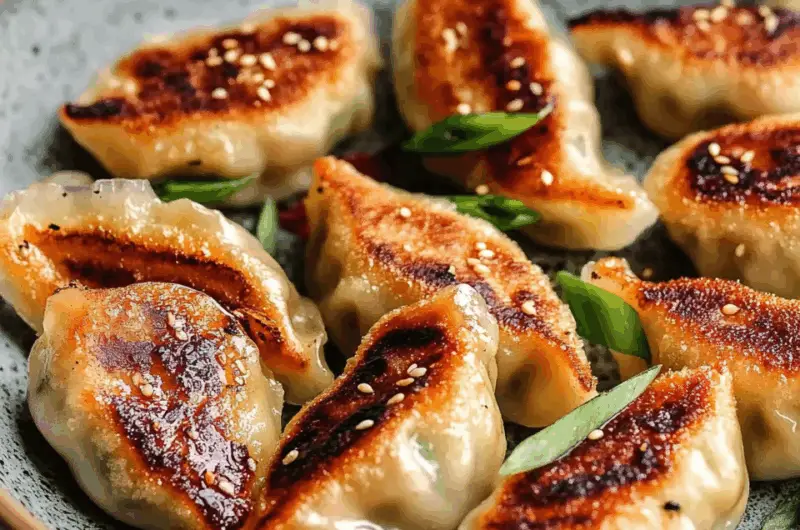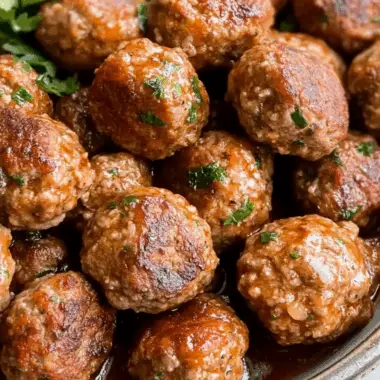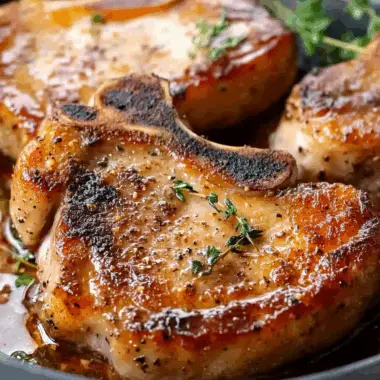Jiaozi, also known as Chinese potstickers or pan-fried dumplings, are a popular and delicious dish that features a golden, crispy exterior and a juicy, flavorful filling. This recipe is a low-carb, paleo, and Whole30-friendly version of traditional potstickers, with turnip or daikon serving as the wrapper, making it a healthier alternative. These dumplings freeze well and are perfect for quick meals, whether you’re enjoying them fresh or straight from the freezer.
Full Recipe:
Ingredients
-
For the Dumpling Wrappers:
-
20 oz daikon radish or turnip (about 3-inch diameter)
-
Coarse sea salt
-
-
For the Filling:
-
3 bulbs scallions, chopped
-
1 tbsp finely chopped ginger
-
2/3 lbs ground chicken (or turkey, pork, lamb)
-
1 tsp toasted sesame oil
-
¼ tsp coarse sea salt (plus more for sprinkling)
-
⅛ tsp ground white pepper
-
1-2 tsp arrowroot starch (omit for keto)
-
-
For Frying:
-
Avocado oil
-
Directions
-
Prepare the Wrappers:
-
Peel and slice the daikon or turnip as thinly as possible, about 1/16-inch thickness, using a mandolin slicer.
-
Lightly sprinkle the radish slices with coarse sea salt on both sides and let them sit for 15 minutes to draw out moisture.
-
Pat the radish slices dry with paper towels to ensure they are soft and flexible.
-
-
Make the Filling:
-
In a large bowl, combine scallions, ginger, ground chicken, sesame oil, sea salt, white pepper, and arrowroot starch. Stir until the mixture forms a sticky paste.
-
-
Assemble the Dumplings:
-
Place a small amount of filling in the center of each radish slice.
-
Use the back of a small spoon to smooth the filling, applying gentle pressure to help it adhere.
-
Fold the radish slice into a half-moon shape and press the edges to seal.
-
-
Cook the Dumplings:
-
Heat a non-stick or cast-iron skillet over medium heat and add 1 tbsp of avocado oil.
-
Place the dumplings in the skillet and cook for about 2 minutes until golden brown on the bottom.
-
Add ½ tbsp of water to the skillet, cover with a lid, and steam the dumplings for 2–2.5 minutes.
-
Remove the lid and cook for an additional 30 seconds to evaporate any remaining water. Carefully remove the dumplings from the skillet.
-
Nutrients (Per Serving)
-
Calories: 186 kcal
-
Carbohydrates: 10g
-
Protein: 19g
-
Fat: 8g
-
Fiber: 3g
-
Sugar: 5g
-
Sodium: 294mg
-
Potassium: 955mg
The Healthier Wrapper: Daikon or Turnip
One of the most notable differences in this recipe is the use of daikon radish or turnip as the dumpling wrapper. Traditional potsticker wrappers are made from flour, which can be high in carbs, making them unsuitable for those following low-carb or gluten-free diets. By using daikon or turnip, you can create a similar texture while keeping the dish light and nutritious.
Daikon radish, a staple in many Asian cuisines, is particularly ideal because of its mild flavor and crunchy texture. It’s low in calories, rich in fiber, and has a high water content, making it a great alternative to dough. Daikon also offers various health benefits, including improved digestion and antioxidants. Similarly, turnips can be used for the wrapper, offering a slightly different flavor but still providing the same low-carb and paleo-friendly benefits.
Preparing the Wrappers: Slicing and Salt
To prepare the wrappers, the daikon or turnip is peeled and sliced as thinly as possible. Using a mandolin slicer ensures uniform thickness, which is key to achieving the right texture. The slices should be about 1/16-inch thick to maintain flexibility without breaking during assembly or cooking.
Once sliced, the radish or turnip slices are lightly sprinkled with coarse sea salt, which draws out moisture from the vegetable. This step is crucial because it softens the slices, making them pliable enough to fold around the filling. After letting the slices rest for about 15 minutes, the moisture is patted dry with paper towels to prevent excess water from interfering with the cooking process. At this point, the wrappers are soft, flexible, and ready for filling.
The Filling: Savory and Flavorful
The filling for these potstickers combines ground meat—typically chicken, though pork, turkey, or lamb can be used—with scallions, ginger, toasted sesame oil, sea salt, white pepper, and arrowroot starch. The ground meat provides the protein base, while the ginger and scallions contribute aromatic flavor. The sesame oil adds a subtle nutty richness, and the arrowroot starch helps bind the filling, giving it a slightly sticky texture that adheres well to the radish wrappers.
Arrowroot starch is a paleo-friendly alternative to cornstarch, and it’s often used in low-carb and Whole30 recipes to thicken and improve the texture of sauces and fillings. While optional for keto followers, arrowroot starch is a great way to enhance the dumplings’ texture without adding unnecessary carbs.
Assembling the Dumplings
To assemble the dumplings, place a small spoonful of the filling in the center of each daikon slice. The amount should be enough to fill the center but not so much that it overflows when folded. Use the back of a small spoon to smooth the filling, applying gentle pressure to help it adhere to the radish.
Once the filling is centered, fold the radish slice into a half-moon shape, pressing the edges together to seal the dumpling. The key to ensuring the dumplings hold together during cooking is to seal them tightly, preventing the filling from spilling out during the frying and steaming process.
Cooking the Dumplings: Pan-Frying and Steaming
The traditional cooking method for jiaozi involves pan-frying them to create a crispy bottom, then steaming to cook the filling thoroughly while keeping the dumplings tender. To cook these healthier potstickers, heat a non-stick or cast-iron skillet over medium heat and add a tablespoon of avocado oil.
Place the dumplings in the skillet, ensuring that they are spaced evenly and not overcrowded. Cook them for about 2 minutes, or until the bottoms are golden brown and crispy. Once the dumplings are seared, add about ½ tablespoon of water to the skillet, then cover with a lid to steam the dumplings. This step ensures that the filling is cooked through and the wrappers become tender. After about 2–2.5 minutes, remove the lid and cook for another 30 seconds to allow any remaining water to evaporate.
Once the dumplings are done, carefully remove them from the skillet and place them on a serving plate. The result is a batch of perfectly cooked potstickers—crispy on the bottom, tender on the top, and packed with juicy, flavorful filling.
Freezing the Dumplings for Later Use
One of the great advantages of this recipe is that these dumplings freeze exceptionally well. Whether you make a large batch for meal prep or simply want to have some on hand for a quick snack, freezing these dumplings is easy and convenient.
To freeze, place the uncooked dumplings on a baking sheet lined with parchment paper, ensuring they don’t touch each other. Once frozen solid, transfer the dumplings to a freezer bag or airtight container. To cook from frozen, simply pan-fry and steam the dumplings as you would with fresh ones, adding a couple of extra minutes to the cooking time.
Serving and Enjoying Jiaozi
These dumplings are best served hot from the skillet, with a side of dipping sauce made from soy sauce, rice vinegar, and a dash of sesame oil for extra flavor. The dipping sauce adds a tangy and slightly salty element that complements the savory filling and crispy wrapper perfectly.
Jiaozi is typically enjoyed as a snack, appetizer, or even as part of a main meal. They’re a great dish for family gatherings or gatherings with friends, as they’re easy to share and can be eaten with chopsticks or fingers. Whether you’re preparing them fresh or enjoying them straight from the freezer, these healthy potstickers are sure to impress.
Conclusion: A Healthy Twist on a Classic Dish
These low-carb, paleo, and Whole30-friendly Jiaozi offer a healthier twist on the traditional potsticker. By using daikon radish or turnip as the wrapper, this recipe eliminates the carbs typically found in dumpling dough, while still providing the delicious flavor and satisfying texture that make potstickers a favorite. Whether you enjoy them fresh or make a batch for the freezer, these dumplings are a delicious, nutritious, and convenient option for anyone craving a comforting, flavorful dish without the guilt.








